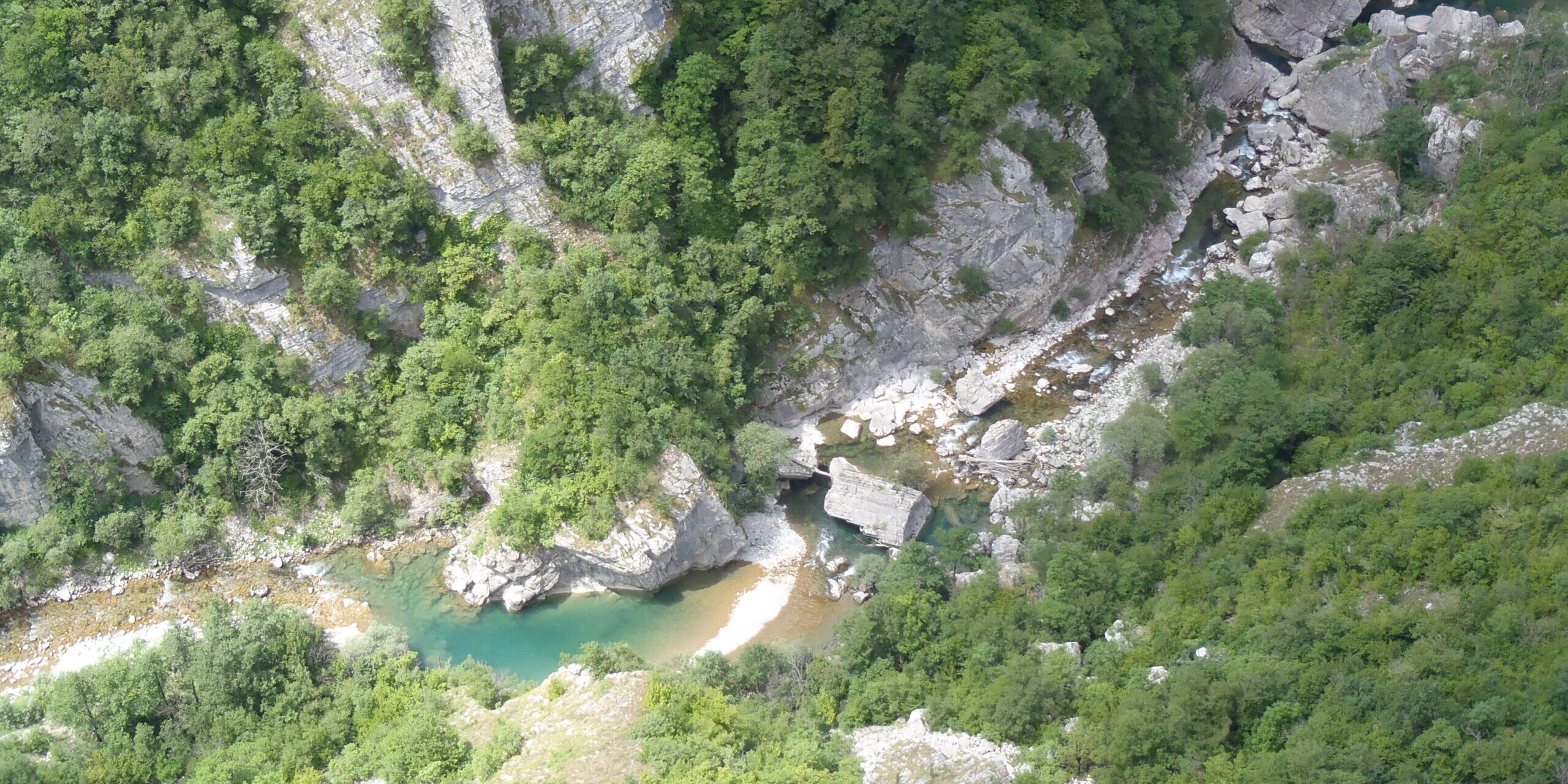Raising renewable energy targets alone will not be enough to reduce GHG emissions in a sustainable manner. The Commission must also match this with tighter criteria for hydropower and biomass projects.
Pippa Gallop, Southeast Europe Energy Advisor, Dan Thomson, EU Policy Assistant | 29 September 2020

Part of Neretva canyon that would be flooded by Ulog hydropower plant
Last week, Bankwatch responded to the European Commission’s public roadmap consultation on the Renewable Energy Directive (RED II), aimed at assessing how EU renewable energy rules can contribute to higher EU climate ambition. We highlighted the need to raise the level of ambition of the Directive’s targets and sub-targets. However, we emphasised that this must also include the strengthening of its sustainability criteria.
Renewable energy will need to play a crucial role if the EU is to achieve its key target to reduce GHG emissions by 55% by 2030. Yet so far, hydropower and biomass have made up a significant proportion of renewables in the EU and accession countries, despite the serious environmental damage they entail.
Bankwatch has documented the harmful impacts of hydropower projects – small and large – on both people and the environment. Within the EU, no fewer than 60% of rivers have failed to reach good health, among others as a result of hydropower construction. In recent years, their trail of destruction has been particularly felt in biodiversity-rich southeast Europe, where nearly a third of all hydropower projects planned or built since 2005 are in protected areas or internationally recognised areas of high biodiversity value.
This overdevelopment of small hydropower projects has been driven by disproportionate support from feed-in tariffs – a form of subsidies that are no longer allowed in the EU except for the smallest projects. In 2018, 70% of renewable energy incentives in the Western Balkans benefitted small hydropower. This is despite small hydropower only generating 3.6% of total electricity.
In the EU, hydropower can in theory only be subsidised if it is in line with the Water Framework Directive. But in practice, there are insufficient mechanisms to ensure this condition works. By the time any breaches of the Directive have been established, subsidies have usually long since been approved.
As a result, Bankwatch is calling for tighter conditions, allowing hydropower to be counted as renewable energy only in countries which have complied with the Water Framework Directive and ensured their rivers are in good health – at least for the river basin in question.
Compliance with the Habitats Directive to prevent damage to protected areas and species also needs to be a condition for labelling energy projects as renewable – and not only be on the project level: no potentially damaging projects in Natura 2000 areas should be counted as renewable energy in any Member State failing to implement the Habitats Directive correctly. This would both prevent unsustainable renewable projects and incentivise better application of the Habitats Directive.
Unfortunately, biomass is no better than hydropower, and brings additional issues regarding carbon emissions. Energy production from forest biomass leads to both CO2 emissions during combustion and reduces the capacity for carbon capture and storage by forests. Yet it is not clear that current EU sustainability criteria take account of this.
In a previous analysis of the National Energy and Climate Plans (NECPs) , Bankwatch found that central and eastern European (CEE) countries plan logging and the use of biomass far above sustainable levels. Estonia, for example, cuts down 30% more forests than grow back for biomass use, and in Slovakia, logging grew by at least 75% from 1990 to 2015, leading to a 6% loss of forest cover.
These concerns were conveyed in our response to the Commission’s roadmap consultation on the Directive. We highlighted that increasing the level of renewable energy will only be part of the solution, and to be truly effective, stricter provisions need to ensure the sustainability of renewable energy projects.
We welcomed the Biodiversity Strategy 2030 released in May this year, which introduced stricter enforcement mechanisms for protecting sustainability. The revised Renewable Energy Directive needs to follow this positive direction. It has the potential to really drive forward renewable energy and act as a catalyst for achieving GHG emission targets. But it must ensure that increasing the EU’s ambitions for renewable energy does not exacerbate environmental and social destruction.
Never miss an update
We expose the risks of international public finance and bring critical updates from the ground – straight to your inbox.
Institution: European Commission | EU funds
Theme: Renewable energy
Tags: EU funds | consultations-eu-funds | hydropower plants | renewable energy
